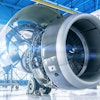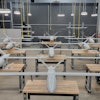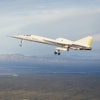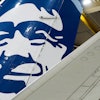The Solar Impulse is a revolutionary solar powered plane with “the wingspan of a 747, the weight of a mid-sized car, and the power of a scooter.” With more than 10,000 solar cells on board, the plane completed its journey across America on July 6th, 2013.
Flying both day and night, Swiss pioneers Bertrand Piccard and André Borschberg, co-founders and pilots of the Solar Impulse, completed the passage without a drop of fossil fuel on board — not even for back up.
"We’ve been dreaming about this, and it is happening now," Piccard exclaims. “In the past the protection of the environment was boring and expensive,” but with the Solar Impulse, he hopes to demonstrate the capabilities of clean technology, and to ultimately bring about a clean technology revolution.
“People are inspired by aviation. If you can do it in the air, we can do it in our daily life,” he adds. “Our airplane is not designed to carry passengers, but to carry a message.”
The U.S. Secretary of Energy, Dr. Ernest Moniz expands on these points, stating that, “the Solar Impulse serves as an inspiring demonstration of solar power. More importantly, it demonstrates the advancement of energy storage and efficiency, system integration, and advanced materials.”
The flight was made possible through the collaboration of various companies, many of which have no specific ties to the aerospace industry. One of the founding companies of the Solar Impulse consortium, Solvay Chemicals, provided 11 different products that were used in more than 20 different applications, and in 6,000 parts.
Claude Michel, head of the Solvay/Solar Impulse partnership explains, “It wasn’t a question of building a plane; it was about energy, and lightweight materials.” Many of the materials developed throughout the production of the plane now have practical applications in everyday products, including electric cars, high-performance yachts, portable electronics, refrigerators, fabrics, and even nutrition, with input from Nestlé Health Science to keep the pilots healthy during long flights. “We didn’t have the feeling that we were building a plane, it was working on a series of projects that needed solutions,” adds Michel.
To continue reading the full article, click here to visit our partner publication, PD&D.























